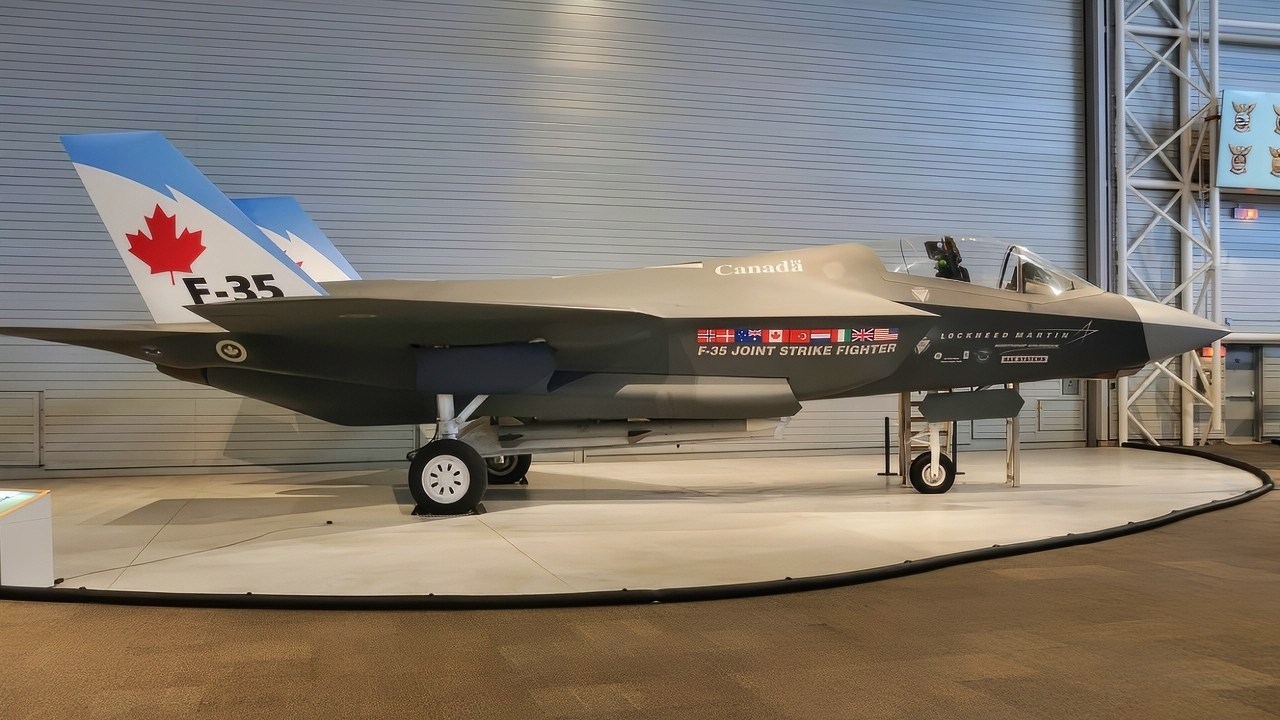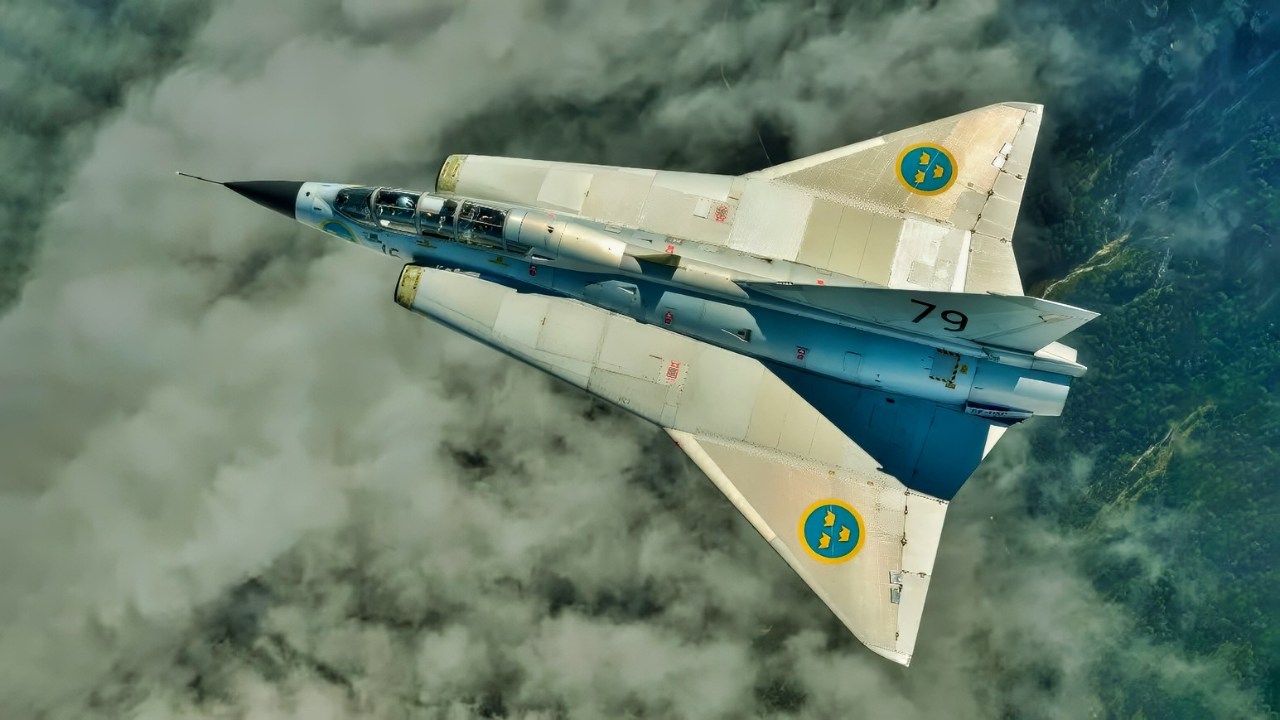Key Points and Summary – Europe is racing to rearm but running into a familiar problem: how smaller states can afford to operate heavy, U.S.-made fighters like the F-35. Sweden has been here before. In the 1950s it built the Saab 35 Draken to counter Soviet bombers on a tight budget, creating a rugged, Mach 2 interceptor that could fly from dispersed road bases and be exported to Denmark and Finland.

U.S. Air Force Airmen load a munition onto an F-35 Lightning II in preparation to conduct a scenario during Checkered Flag 24-1 at Tyndall Air Force Base, Florida, Nov. 1, 2023. Checkered Flag is a large-force aerial exercise held at Tyndall Air Force Base which fosters readiness and interoperability through the incorporation of 4th and 5th-generation aircraft during air-to-air combat training. (U.S. Air Force photo by Staff Sgt. Jake Carter)
Today Saab is replaying that formula with the Gripen E, pitching low sustainment costs and true operational sovereignty.
As Poland, Finland and others invest in layered air defense, Sweden’s “smart, not huge” model may again shape Europe’s air-power future.
A Look Back at the Saab 35 Draken
As Europe works on its most rapid military hardware and capability ramp-up in years, its fighter jet debate is shifting once again. Its focus? How smaller nations can realistically operate heavy, twin-engine fighters – and if it’s even possible.
Austria’s expected retirement of its leased Eurofighter Typhoons has significantly contributed to the renewed discussion.

Eurofighter Typhoon Training in Sky. Image Credit: Creative Commons.
At the same time, Sweden has been gradually positioning itself across Europe as the solution to the problem. Targeting countries frustrated with spiraling F-35 sustainment costs and the broader logistical issues that come with joining the American fighter jet ecosystem, Sweden is paving the way for a future of European air power backed by Swedish-designed fighters.
And in parallel, Poland and Finland have poured billions into layered air-defense systems, suggesting a continent-wide rebalancing is underway. Europe is building volume and resilience in terms of both missile and air power, while focusing on affordability and sovereignty.
The U.S. may offer the best systems, but they come at a price – and Sweden’s Saab offers a long legacy of excellence in fighter jet design.
Sweden confronted problems like this some 70 years ago – and the aircraft that embodies that experience, the Saab 35 Draken, now looks like a blueprint for what Europe needs to do next.
Meet the Draken
Saab’s Draken was a product of the 1950s when Sweden faced a dilemma that sounds familiar today: the need to counter a much larger adversary without bankrupting itself.
As the Soviet Union expanded its long-range aviation force, Swedish planners recognized they needed a fighter capable of extremely rapid climb rates and highly maneuverable to intercept and defeat high-altitude threats.
It was those requirements that produced one of the most distinctive aircraft of the Cold War.
This double-delta-wing interceptor could reach Mach 2 and operate from short, dispersed airfields across the Bas 60 wartime air base network.
The jet was explicitly designed to respond to fast and high-altitude incursions from the east, with the wing shape deliberately chosen to maintain stability at very high angles of attack during interceptions.
Its unusual wing, therefore, did more than just create an interesting silhouette. In fact, it represented a major break from Western design orthodoxy at the time – an early indication that Sweden was willing to experiment rather than simply copying trends emerging in the United Kingdom and United States.
This culture of experimentation ultimately produced a fighter that worked for Sweden, but which could also be exported – a milestone for a non-aligned state during the Cold War.
Denmark was the first NATO nation to adopt Draken in the 1970s, purchasing a mix of variants, including the strike F-35, reconnaissance RF-25/RF-35XD, and trainer TF-35 versions.

Canada F-35. Image Credit: Creative Commons.
Finland followed suit, acquiring new and second-hand Drakens from Sweden and operating them until the year 2000. The fact that NATO and non-aligned countries turned to a Swedish design remains significant, as it proved that a smaller nation could build aircraft that competed with larger Western platforms.
And it’s a dynamic we’re seeing play out all over again today.
Sweden Fights to Arm Europe
This is precisely the dynamic Saab is attempting to revive in today’s fighter jet market. The Gripen E is pitched to European governments as a low-maintenance solution at a time when defense ministries are scrambling to arm themselves as quickly and cost-effectively as possible.

JAS 39 Gripen E Fighter. Image Credit: Creative Commons.
Europe is confronting at least a decade of massive sustainment bills, all the while facing a likely capability gap as Russia and China continue their own military ramp-ups.
For Europe, the F-35 might be a good option – but cost is becoming a problem. The F-35’s per-hour cost has become a contentious point, and the U.S. Government Accountability Office has even reported that the jet’s sustainment costs remain unaffordable for several partner nations, and that operating expenses are exceeding original targets.
It’s for this reason and others that European countries and even Canada are looking to Europe for alternatives – and to Saab and its Gripens more specifically.
And another detail is essential not to overlook here, and it’s something that the Draken-era planners could never fully deliver: operational sovereignty.
Saab has repeatedly emphasized that Gripen customers can perform their own maintenance, integrate their own weapons, and avoid U.S. export-control bottlenecks. It’s a selling point that has already won over Brazil and is attracting Canada, as Prime Minister Mark Carney looks for ways to escape dependence on U.S. systems.
For a continent currently recalibrating its air-power ambitions and capabilities, this old lesson from Sweden applies: nations that stay flexible, affordable, and sovereign will be well-equipped—assuming, of course, that those aircraft provide the capabilities necessary to fight against larger forces.
About the Author:
Jack Buckby is a British author, counter-extremism researcher, and journalist based in New York who writes frequently for National Security Journal. Reporting on the U.K., Europe, and the U.S., he works to analyze and understand left-wing and right-wing radicalization, and reports on Western governments’ approaches to the pressing issues of today. His books and research papers explore these themes and propose pragmatic solutions to our increasingly polarized society. His latest book is The Truth Teller: RFK Jr. and the Case for a Post-Partisan Presidency.
More Military
Montana-Class vs. Yamato-Class: It Would Have Been the Ultimate Battleship Battle
The Littoral Combat Ship Might Be the Navy’s Biggest Mistake Ever










